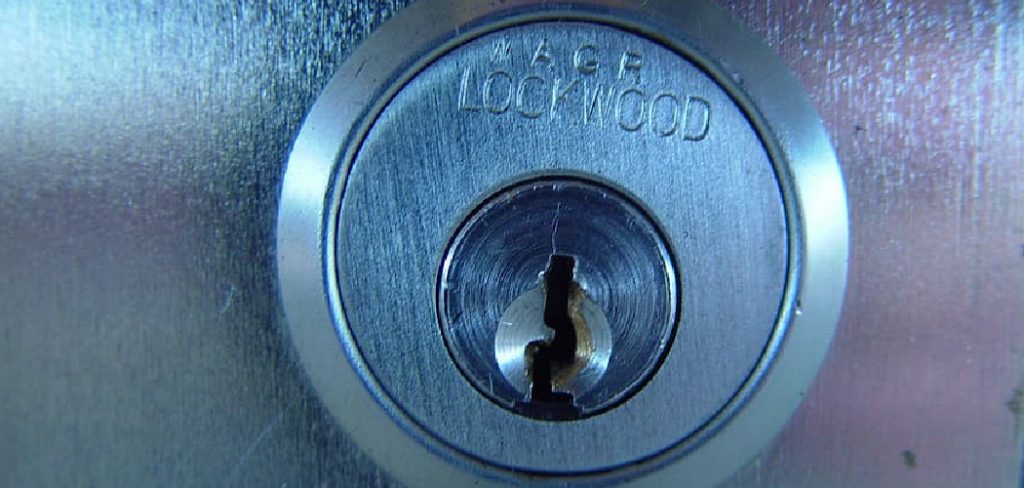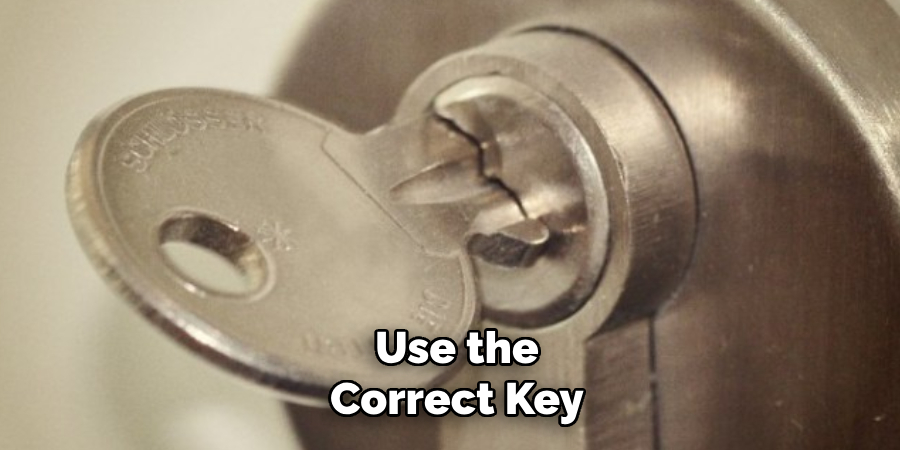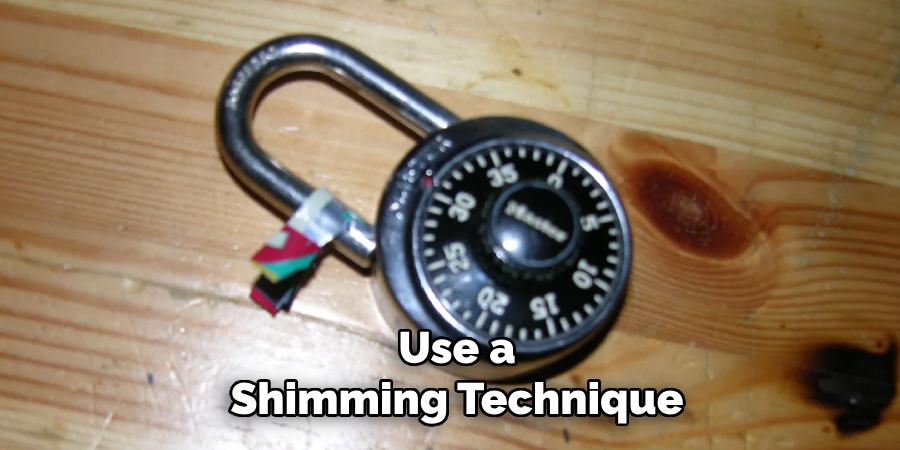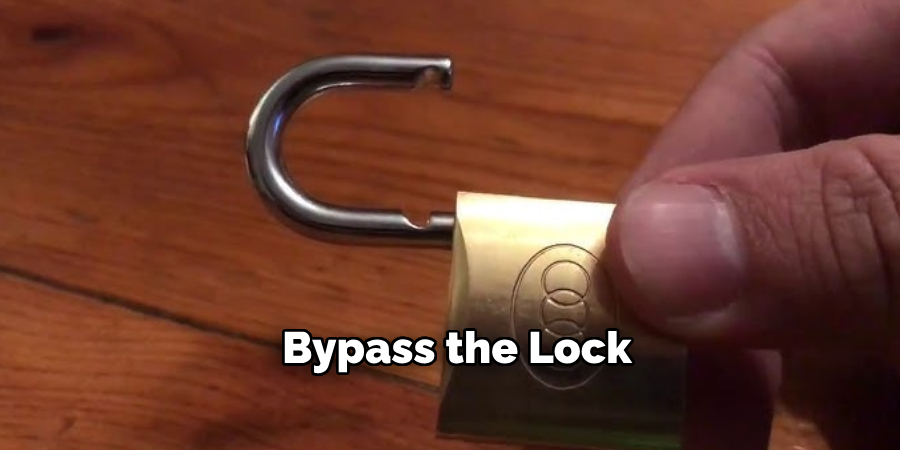A round lock is a common type of lock designed for security and durability, often used for lockers, gates, or storage units. Opening a round lock may seem straightforward, but it requires the correct tools and technique for smooth operation. This guide will provide clear and easy-to-follow steps of how to open round lock efficiently and securely.

What is a Round Lock?
A round lock, often referred to as a disc lock or circle lock, is a security mechanism known for its robust design and tamper-resistant features. Its shape is typically circular, with a shackle that is largely hidden or fully enclosed, making it more difficult for burglars to cut or manipulate.
Round locks are commonly used in places where high security is essential, such as storage units, gates, or lockers. They operate with a key or combination mechanism, and their durable construction often includes hardened steel to resist breaking or drilling attempts. The unique design not only enhances security but also contributes to their long-lasting performance in various environments.
Tools and Materials Needed
To successfully install or utilize a round lock, you will need a few essential tools and materials. These include:
- The round lock itself – Ensure you have the correct size and type for your intended application.
- Keys or combination information – Depending on the type of lock, you will need these to operate it securely.
- Measuring tape – Useful for confirming the dimensions of the locking mechanism and ensuring compatibility with the intended installation point.
- Drill (optional) – If installing the lock on a gate or surface without a pre-existing lock slot, a drill is necessary to create an appropriate hole.
- Mounting hardware – Screws, brackets, or other necessary materials to securely affix the lock in place.
- Lubricant – To maintain the lock’s performance and prevent rust in outdoor environments.
Having these tools and materials ready will streamline the process and ensure the round lock is installed or used correctly.
10 Methods How to Open Round Lock
1. Use the Correct Key
The simplest and most effective way to open a round lock is by using the correct key. Round locks typically require a specific key that matches the internal mechanism, such as a disc tumbler system. If you have the key, insert it into the lock and turn it counterclockwise or clockwise (depending on the lock’s design).

If the lock is difficult to open, ensure that the key is fully inserted and that there is no debris inside the keyhole. Using a lubricating agent, like graphite powder, can help loosen any rust or dirt inside the lock mechanism. If you’re unsure of the key, try to find the correct one by checking any spare keys or contacting the lock manufacturer.
2. Pick the Lock
Lock picking is a skill that involves manipulating the internal mechanisms of a lock without a key. While this method requires practice and finesse, it can be effective for opening round locks, particularly those with simpler internal mechanisms.
To pick a round lock, you’ll need a few specialized tools, including a tension wrench and a pick. Insert the tension wrench into the keyhole and apply slight pressure. Then, use the pick to manipulate the individual pins or tumblers inside the lock until they align and allow the lock to open. If you’re new to lock picking, practice with a basic lock before attempting it on a round lock.
3. Use a Bump Key
A bump key is a specially crafted key that can be used to open certain types of locks, including round locks. This method is faster than traditional lock picking and can be effective in situations where you don’t have the correct key.
To use a bump key, you’ll need to find a key that matches the shape of the lock and file it down to create a bump key. Insert the bump key into the lock and gently tap it with a hammer or another hard object. The bump key will cause the pins inside the lock to jump, allowing you to turn the key and open the lock. However, this technique requires precision, and not all locks are vulnerable to bump keys.
4. Apply Lubricant
If your round lock is stuck due to rust, dirt, or other debris, applying a lubricant can help free it up and make it easier to open. A graphite-based lubricant is ideal for locks because it doesn’t attract dust and dirt. Spray or apply a small amount of lubricant directly into the keyhole. Then, insert the key and gently turn it. If the lock is still stuck, try tapping the key gently with a hammer or applying slight pressure while turning the key. Over time, regular lubrication can help maintain the functionality of your round lock and prevent future sticking.
5. Use a Lock Lubricant Spray
For stubborn round locks, a lock lubricant spray can be highly effective. These sprays are designed to break down rust and grime that may be blocking the mechanism of the lock. Simply insert the nozzle into the keyhole and spray the lubricant into the lock.

Wait for a few minutes to allow the spray to penetrate and break up any internal blockages. After waiting, insert the key and gently turn it. If the lock opens, it means the spray successfully cleared the blockage. Repeat the process if necessary. Be sure to choose a lubricant designed for locks to avoid damaging the internal components.
6. Drill the Lock
In more extreme situations where the lock cannot be opened with conventional methods, drilling the lock may be necessary. Drilling is a destructive process that will render the lock useless, so it should only be used as a last resort. To drill the lock, you’ll need a power drill with a metal drill bit.
Position the drill bit over the center of the keyhole, and start drilling slowly. As you drill through the lock, you’ll eventually hit the internal components, which will allow you to open the lock. Keep in mind that this method will destroy the lock, and it will need to be replaced afterward. Make sure to wear safety goggles and take precautions to avoid injury.
7. Contact a Locksmith
If you are unable to open the round lock using DIY methods, contacting a professional locksmith is often the best option. Locksmiths are skilled in a variety of lock-related issues, including round locks, and they have specialized tools to open locks without damaging them.
A locksmith can use lock-picking techniques or other tools to safely open the lock and may even be able to rekey it or replace the internal mechanisms if necessary. Hiring a locksmith ensures that the lock is opened without the risk of damaging it, especially if it’s a high-quality or expensive lock.
8. Use a Shimming Technique
Shimming is another lock bypass technique that can be used to open certain types of locks, including round locks. A shim is a thin piece of metal or plastic that can be inserted into the lock mechanism to push the pins out of alignment. To use this method, you’ll need to create or buy a shim designed for the type of lock you are working with.

Insert the shim into the gap between the lock’s cylinder and the pin stack. When properly inserted, the shim will disengage the pins, allowing the lock to be turned open. Shimming works best on locks with simpler mechanisms but may not be effective for more complex locks.
9. Try the “Hammer and Tap” Technique
If the lock is jammed or resistant to turning, tapping the key gently with a hammer may help. To use this method, insert the key into the lock and lightly tap it with a hammer or a similar object. The vibrations from the tapping may help loosen any internal blockages or stuck pins inside the lock, making it easier to turn the key and open the lock. Be sure to use only light taps, as hitting the lock too hard could cause damage to the internal components.
10. Bypass the Lock (if Applicable)

In some cases, round locks are designed to be bypassed without using traditional opening methods. Some padlocks and bike locks, for example, may have a keyhole bypass mechanism or a code that can be used to open the lock without needing the key. Check the manufacturer’s instructions or documentation to see if there are any special bypass procedures for your specific round lock model. If you are unable to locate this information, contacting the manufacturer or a locksmith may be helpful in determining a bypass method.
Conclusion
Opening a round lock can be a challenging task, especially if you don’t have the key or combination on hand. However, by using one of these 10 methods—ranging from using the correct key and lubricating the lock to more advanced techniques like lock picking and drilling—you can find a way to gain access.
Each method has its own advantages and drawbacks, and the best approach will depend on the specific type of lock you are dealing with. For more difficult cases, it’s always wise to seek the assistance of a professional locksmith to avoid causing damage to the lock. Thanks for reading, and we hope this has given you some inspiration on how to open round lock!
About
Safety Fic is a distinguished figure in the world of Diy design, with a decade of expertise creating innovative and sustainable Diy solutions. His professional focus lies in merging traditional craftsmanship with modern manufacturing techniques, fostering designs that are both practical and environmentally conscious. As the author of diy, Safety Fic delves into the art and science of Safety Fic-making, inspiring artisans and industry professionals alike.
Education RMIT University
(Melbourne, Australia) Associate Degree in Design (Safety Fic) Focus on sustainable design, industry-driven projects, and practical craftsmanship. Gained hands-on experience with traditional and digital manufacturing tools, such as CAD and CNC software.
Nottingham Trent University
(United Kingdom) Bachelor’s in diyfastly.com and Product Design (Honors) Specialized in product design with a focus on blending creativity with production techniques. Participated in industry projects, working with companies like John Lewis and Vitsoe to gain real-world insights.
Publications and Impact
In diy, Safety Fic his insights on indoor design processes, materials, and strategies for efficient production. His writing bridges the gap between artisan knowledge and modern industry needs, making it a must-read for both budding designers and seasoned professionals.
